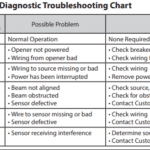Shark robotic vacuum cleaners are popular for their convenience and efficiency. Yet, like any device, they can face issues.
Robotic vacuum cleaners simplify cleaning, but problems can arise. From connectivity issues to performance glitches, troubleshooting can be daunting. Understanding common problems and solutions can save time and frustration. This guide will help you identify and resolve issues with your Shark robotic vacuum cleaner.
By following these tips, you’ll keep your device running smoothly and your home clean. Dive in to learn how to troubleshoot your Shark robotic vacuum cleaner and ensure it works at its best.
Power Issues
Power issues with Shark robotic vacuum cleaners can be frustrating. These problems often prevent the device from functioning properly. This section covers common power issues and how to troubleshoot them.
Vacuum Not Turning On
If your Shark vacuum is not turning on, first check the power switch. Ensure it is in the ‘on’ position. Verify that the vacuum is properly connected to the charging dock. The dock should be plugged into a working outlet. Look for any loose connections. Inspect the power cord for damage. If the cord is damaged, it may need replacement.
Another step is to check the battery. The battery might be completely drained. Try charging the vacuum for at least two hours. If the vacuum still doesn’t turn on, the battery could be faulty. Consider replacing the battery with a new one. Follow the user manual for the replacement process. If these steps don’t work, contact Shark customer support for help.
Battery Not Charging
If the battery is not charging, first inspect the charging dock. Make sure it is plugged into a working outlet. Check the connections between the dock and the vacuum. Clean the metal contacts on both the dock and the vacuum. Dust or debris can prevent proper charging.
Next, examine the power adapter for any damage. A damaged adapter can prevent charging. Try using a different outlet to rule out power issues. If the vacuum still doesn’t charge, the battery may be the problem. Replace the battery if it is old or worn out. If the issue persists, contact Shark customer service for further assistance.

Credit: www.youtube.com
Navigation Problems
Shark robotic vacuum cleaners are great at keeping your floors clean. Yet, sometimes, they face navigation problems. These issues can interrupt their cleaning cycles. Understanding these problems can help you fix them quickly.
Vacuum Stuck Or Not Moving
If your Shark robotic vacuum is stuck or not moving, check for obstacles. Remove any toys, cables, or other objects in its path. Ensure the vacuum’s wheels are free from debris. Clean the wheels if you find any dirt or hair tangled.
Another reason could be low battery. Make sure the vacuum is fully charged. Place it back on its charging dock and wait for it to recharge. If the vacuum still does not move, check for software updates. Sometimes, updating the software can fix movement issues.
Sensor Errors
Sensor errors can cause navigation problems. If your Shark vacuum shows a sensor error, clean the sensors. Use a soft cloth to wipe the sensors on the front and sides. Dust and dirt can block the sensors, causing errors.
If cleaning the sensors does not help, restart the vacuum. Turn it off and wait for a few seconds. Turn it back on and see if the error is gone. You can also refer to the user manual for specific sensor error codes. The manual can provide solutions for those codes.
Cleaning Performance
The Shark Robotic Vacuum Cleaner is a reliable assistant for keeping your floors clean. Yet, users may face some issues with its cleaning performance. This section will guide you through troubleshooting common problems related to cleaning efficiency.
Poor Suction
Poor suction can impact the vacuum’s ability to pick up dirt. Here are some steps to resolve this issue:
- Check the dust bin. Ensure it is not full.
- Inspect the filters. Clean or replace them if needed.
- Examine the airway for blockages. Remove any debris.
Regular maintenance of these components ensures optimal suction power.
Brush Roll Malfunctions
The brush roll is key to the vacuum’s cleaning ability. If it malfunctions, follow these steps:
- Turn off the vacuum and unplug it.
- Remove the brush roll. Check for tangled hair or threads.
- Clean the brush roll thoroughly. Use scissors to cut any tangles.
- Inspect the belt. Ensure it is not broken or loose.
Keeping the brush roll clean and free of obstructions will enhance cleaning performance.
For detailed guidance, consult the user manual or visit the official Shark website.
Connectivity Issues
Connectivity issues can be frustrating. They can prevent your Shark robotic vacuum cleaner from working efficiently. This section addresses common problems and provides solutions.
Wi-fi Connection Problems
Wi-Fi connection problems are common with robotic vacuum cleaners. Ensure your router is working properly. Restart your router to resolve minor issues. Place the vacuum cleaner closer to the router. This improves signal strength.
Check if your Wi-Fi network is 2.4 GHz. Shark vacuums often do not support 5 GHz networks. If the problem persists, reset the vacuum cleaner’s Wi-Fi settings. Refer to the user manual for detailed instructions.
App Not Responding
An unresponsive app can hinder your vacuum cleaner’s performance. Begin by closing and reopening the app. Ensure your smartphone’s operating system is up to date.
Check for updates to the Shark app. Sometimes, bugs cause the app to freeze. Reinstall the app if updating does not help. Restart your phone to clear any temporary issues.
Ensure the vacuum cleaner is turned on and connected to Wi-Fi. If the app still does not respond, contact Shark customer support. They can provide further assistance and troubleshooting steps.
Noise Concerns
Experiencing noise issues with your Shark Robotic Vacuum Cleaner? You are not alone. Noise concerns are common and can indicate various problems. Let’s dive into the details with a focus on Unusual Sounds and Loud Operation.
Unusual Sounds
If your Shark Robotic Vacuum Cleaner is making strange noises, it is essential to identify the cause. Below are some common sources of unusual sounds:
- Debris in Brushes: Check for debris tangled in the brushes. This can cause grinding or whirring noises.
- Loose Parts: Inspect the vacuum for any loose screws or parts. Tighten them to stop rattling sounds.
- Worn-out Components: Some parts may wear out over time. Listen for squeaking or high-pitched noises, indicating the need for replacement.
Regular maintenance can help avoid these issues. Always clean the vacuum after each use. Remove any visible dirt or hair from the brushes and wheels.
Loud Operation
A loud Shark Robotic Vacuum Cleaner can be annoying. Here are some tips to reduce the noise:
- Filter Cleaning: Dirty filters can cause the vacuum to work harder. Clean or replace filters regularly.
- Battery Check: Ensure the battery is fully charged. A low battery can make the motor work harder, causing more noise.
- Inspecting Wheels: Check the wheels for any obstructions. Remove any debris that might be causing friction.
Keeping your vacuum cleaner in good condition can minimize noise. If the problem persists, consider contacting Shark customer support for further assistance.

Credit: www.ifixit.com
Maintenance Tips
Maintaining your Shark robotic vacuum cleaner ensures it works efficiently and lasts longer. Regular upkeep can prevent common issues and keep your device running smoothly. Below are some essential maintenance tips to help you troubleshoot and maintain your Shark robotic vacuum cleaner.
Regular Cleaning
Regularly clean the dustbin and filter to ensure optimal performance. Remove and empty the dustbin after each use. Rinse the dustbin and filter with water, then let them dry completely. This prevents clogs and maintains suction power.
Wipe the sensors and charging contacts with a dry cloth. Dust or dirt on these parts can affect the vacuum’s navigation and charging efficiency. Keep the wheels and brushes free of hair and debris to avoid jams and ensure smooth movement.
Parts Replacement
Replace the filter every three months for best performance. A clean filter ensures proper airflow and prevents dust from escaping back into your home. Check the brushes regularly and replace them if they show wear or damage.
Inspect the battery and replace it if it no longer holds a charge. A healthy battery ensures your vacuum runs for the full cleaning cycle. Keep an eye on other parts like the wheels and sensors, and replace them as needed.
By following these maintenance tips, you can keep your Shark robotic vacuum cleaner in top shape. This will help you avoid common issues and extend the life of your device.
When To Seek Professional Help
Shark robotic vacuum cleaners are reliable and efficient. But even the best devices can run into problems. Knowing when to seek professional help can save you time and effort. In this section, we will discuss key signs of major issues and how to contact Shark support for assistance.
Signs Of Major Issues
Some issues can be resolved at home. But certain signs indicate the need for professional help. If your Shark robotic vacuum cleaner stops moving altogether, it is a major issue. Strange noises coming from the vacuum can also be a sign of a serious problem.
If the vacuum cleaner frequently loses power or shuts down, it needs expert attention. Persistent error messages that you cannot clear are another red flag. If you notice any of these signs, it is time to contact a professional.
Contacting Shark Support
Reaching out to Shark support is simple and straightforward. Visit the official Shark website and navigate to the support section. You can find contact details, including phone numbers and email addresses.
Before contacting support, have your vacuum cleaner’s model and serial number handy. This information helps the support team assist you more efficiently. Explain the issue clearly and provide any error codes displayed.
Shark support may guide you through some troubleshooting steps. If the issue persists, they will advise on further action, such as repairs or replacement.

Credit: www.youtube.com
Frequently Asked Questions
Why Is My Shark Vacuum Not Turning On?
Ensure the vacuum is plugged in. Check the power outlet and the vacuum’s power switch.
How Do I Clean The Shark Vacuum Filter?
Remove the filter. Rinse it with water. Let it air dry completely before reinserting.
What Should I Do If The Vacuum Loses Suction?
Check for blockages in the hose and brush roll. Clean the filters and empty the dust cup.
Why Is My Shark Vacuum Making Loud Noises?
Inspect for debris in the brush roll or hose. Clear any blockages and ensure parts are secure.
How Can I Reset My Shark Robotic Vacuum?
Turn off the vacuum. Wait 10 seconds. Turn it back on. This can solve minor issues.
Conclusion
Shark robotic vacuums make cleaning easier. Troubleshooting common issues ensures smooth operation. Regular maintenance helps extend the vacuum’s lifespan. Always check for blockages and clean filters. Keep the sensors dust-free for better performance. Following these tips can save time and money.
Enjoy a cleaner home with less effort. Happy vacuuming!





